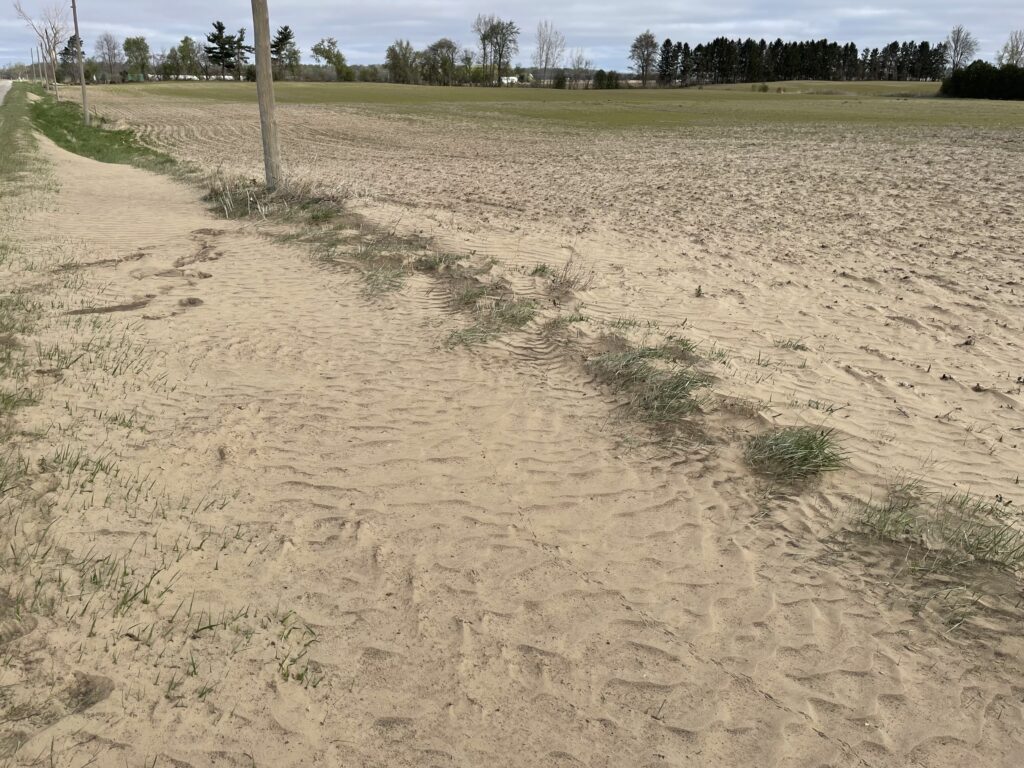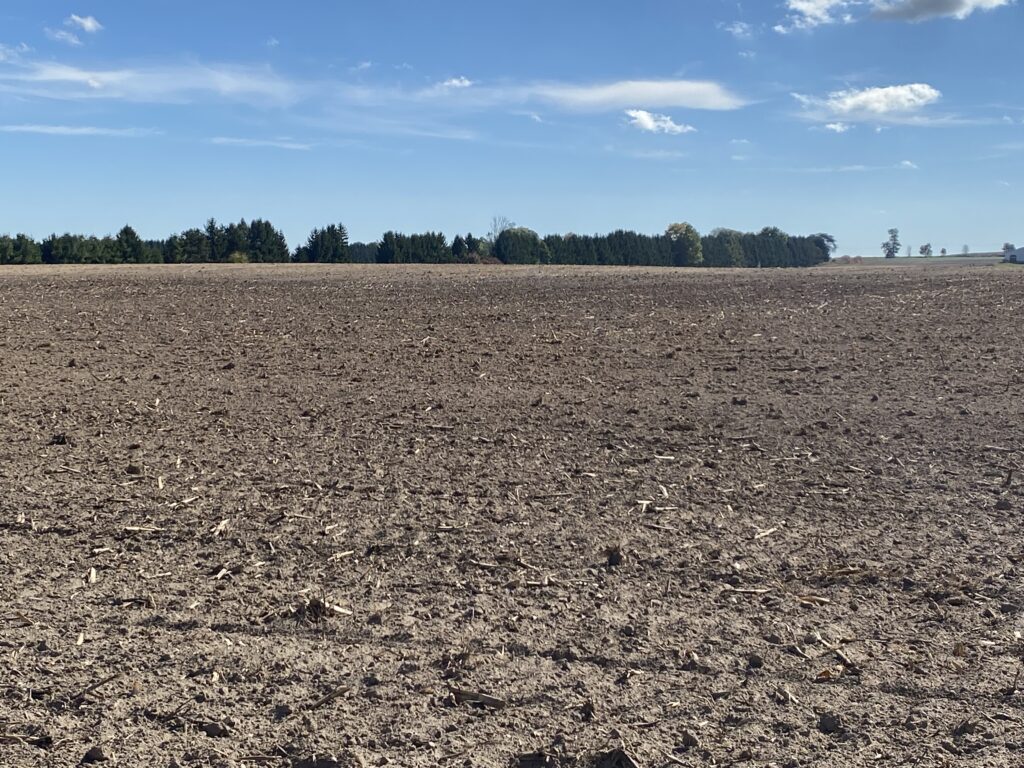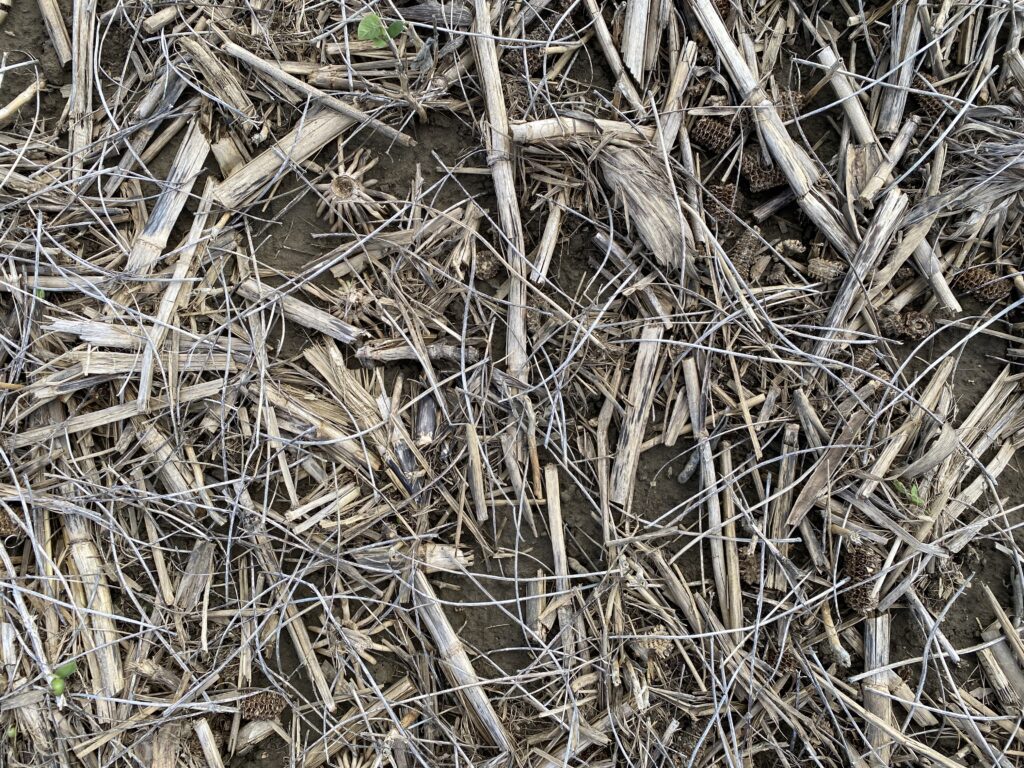Wind erosion can cause significant soil loss. This fall, consider how your residue management and tillage practices can help reduce risk of erosion by wind over the winter and into next spring.
Wind erosion is often seen as a problem of the US plains or Canadian prairies from decades past, but recent experience has shown that it’s a modern-day concern right here in Ontario. It leads to reduced visibility on roads (Figure 1), topsoil loss (Figure 2), and sandblasting damage to crops.


What causes wind erosion, and which fields are most vulnerable?
Wind erosion occurs when strong winds meet dry, loose soil and detach and move particles. Sandy and muck soils are most at risk due to weak particle attachments. Even silt loams can erode if dry, bare, and poorly structured. Smooth, overworked soils are especially vulnerable and lack of residue cover and long distances between windbreaks increase the risk. Figure 3 shows an example Ontario soil that is at risk of erosion heading into the non-growing season.

How can you reduce wind erosion risk?
Practices that strengthen soil resistance and reduce wind force are key. Maintaining residue cover helps with both. Keeping at least 30% residue cover following harvest through until the next spring is critical (Figures 4). No-till, mulch tillage, strip-till, or delaying tillage until just before planting are all good options and are agronomically effective for coarser-textured soils most prone to erosion by wind. In a year like 2025, where crop residue levels may be significantly less than normal in drought-affected areas, adjust tillage intensity to ensure adequate residue cover.
Windbreaks and shelterbelts can reduce wind speed for a distance of up to 10 times their height. Single row plantings can be effective while minimizing the area of impacted cropland. And plantings of annual species have been used in Ontario for decades to act as wind barriers for sensitive crops.

Maintain residue cover
If you were affected by the April 2025 wind event or if you feel your soils may be vulnerable to similar events in the future, consider taking a simple step this fall to reduce future risk. The greatest short-term impact you can have is by not overworking your soils and retaining a reasonable level of residue cover. Ask yourself: what is the minimum about of tillage required to achieve adequate soil warming and drying in the spring?
Resources
- For a more detailed description of wind erosion and best management practices to address it, read OMAFA’s Wind Erosion BMP factsheet.
- If you are interested in strip-tillage as a practice to maintain residue cover while improving fertilizer placement, check out OMAFA’s strip-tillage factsheets: Strip-Tillage in Ontario: The Basics and Making it Work, as well as a comprehensive strip-tillage video series featuring Ontario farmers from Farm and Food Care.
- To learn more about risks to soil such as wind, water and tillage erosion, read the Soil Degradation Risks factsheet on Field Crop News.
- If you want to increase surface residue through cover cropping, get started with these Cover Crop Recipes for Ontario from the Midwest Cover Crops Council.
- For situations where tree plantings may be needed, learn the basics in the Field Windbreaks BMP factsheet.
- Finally, contact your local conservation authority or visit OSCIA’s website for cost-share opportunities and local expertise.